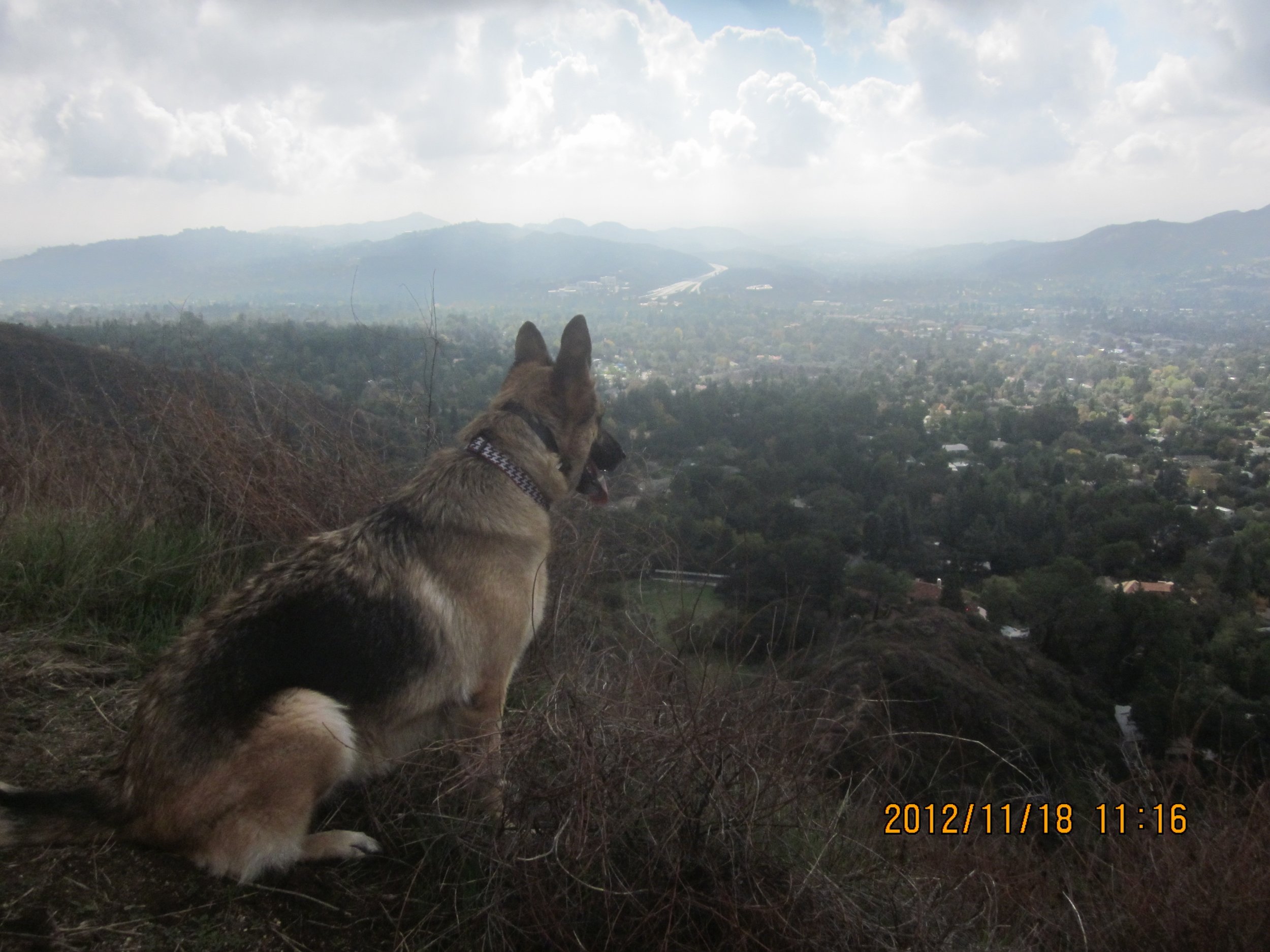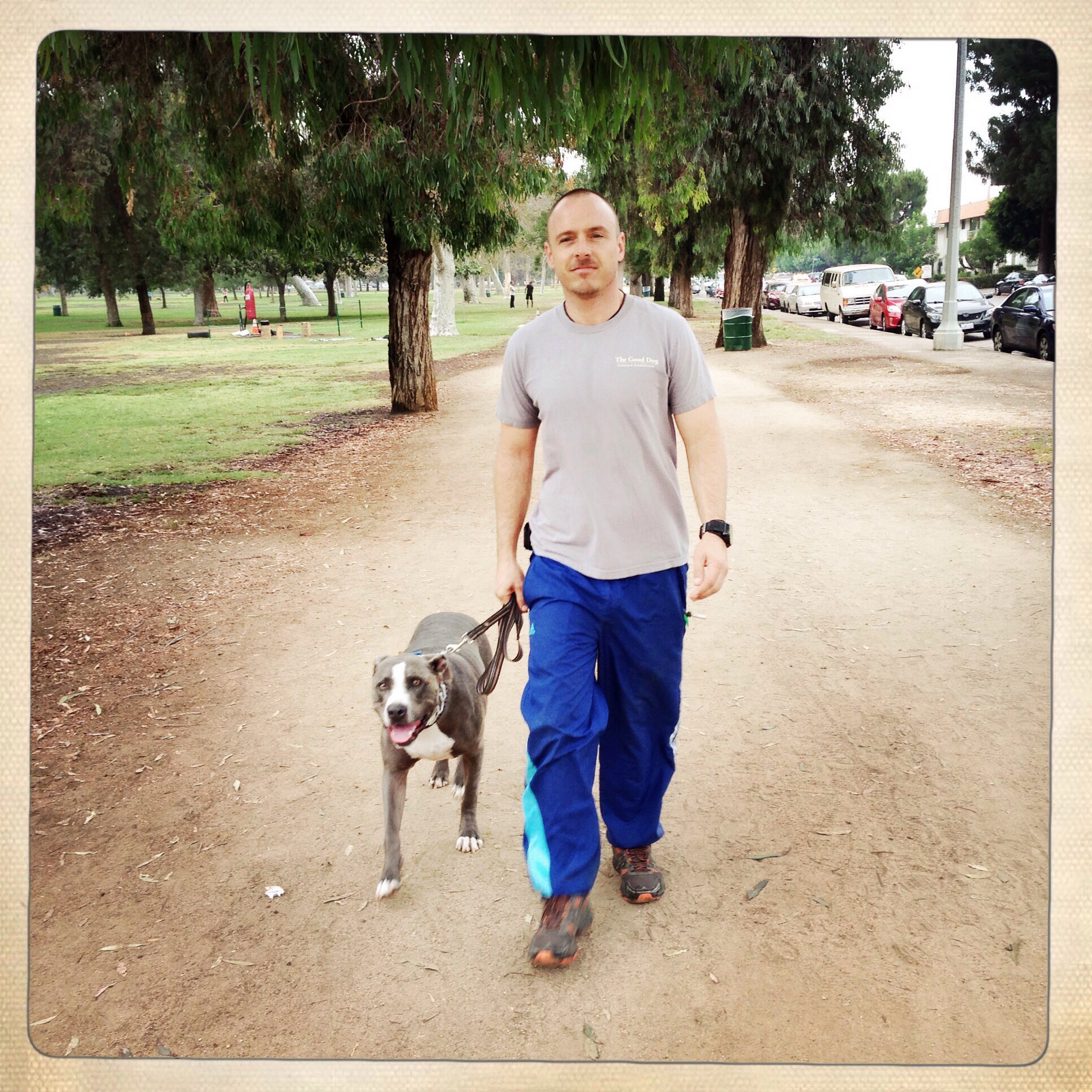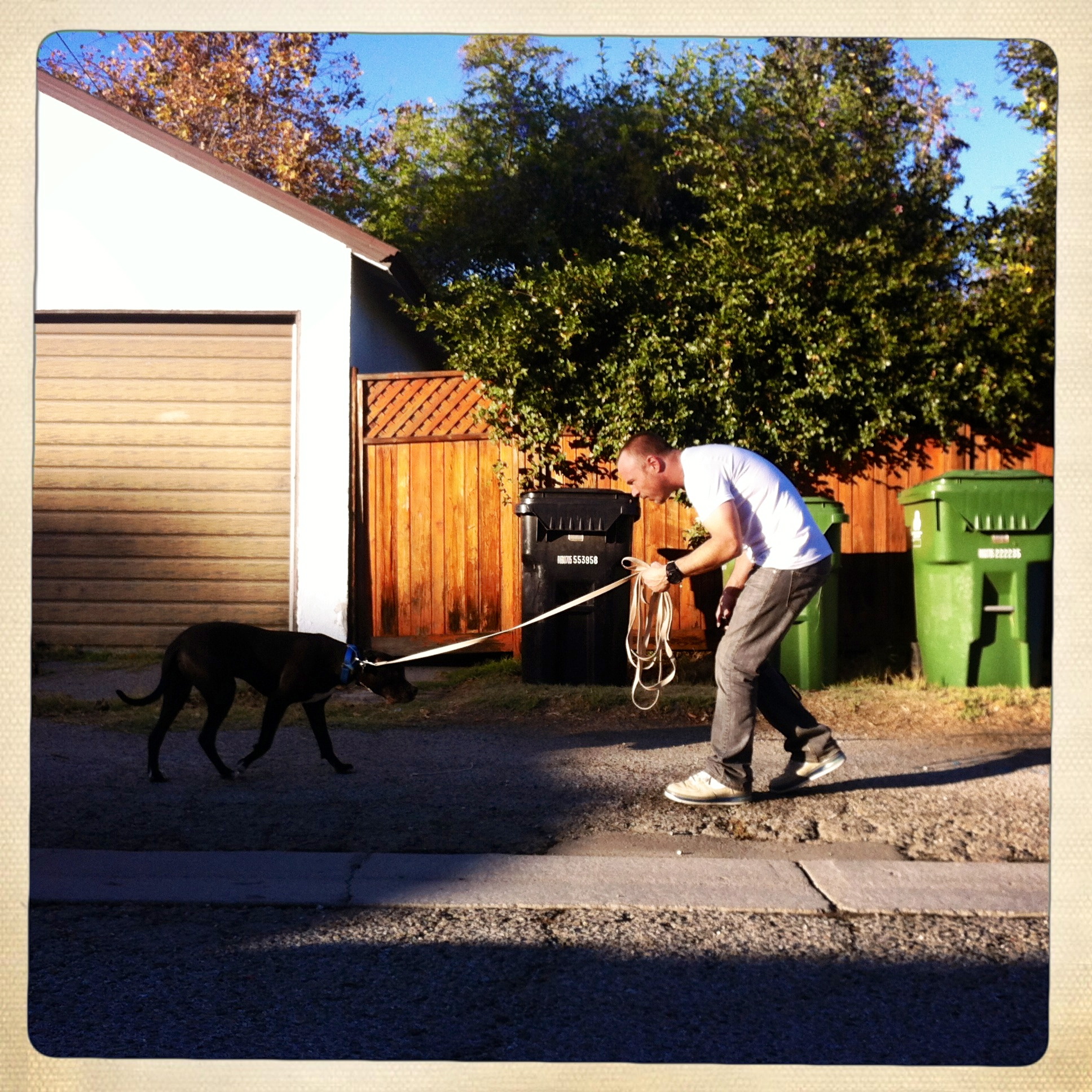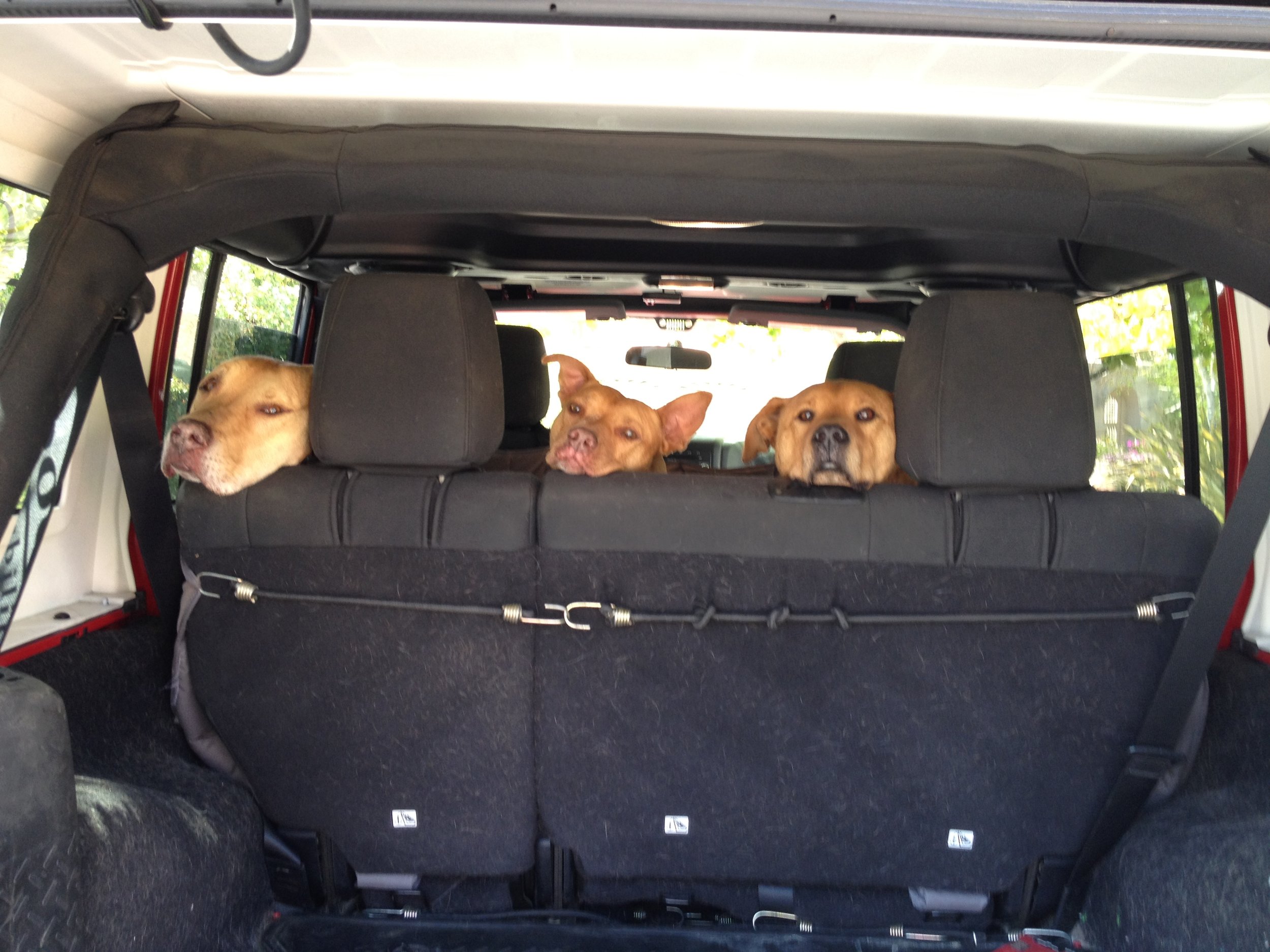 Whether It be business, financial, relationship, personal, or even dog training (make that especially dog training!), if you're not harnessing the amazing power of visualization, goal setting, and creating intentions, you're missing out on some of the great secrets of success!I personally am a big subscriber to the power of these tools, and they have helped me tremendously in all aspects of my life.Let's take a super quick look at how these work, and then we'll see how they might just help you with your dog...and maybe more.When you set a goal, visualize an outcome, or create the intention of what you'd like to create, you set several things in motion:1) You cause your brain's filter (known by its fancy name as R.A.S. - Reticular Activating System), to adjust its focus toward helping you accomplish the goal you desire. Your brain filters out most of the information that it is bombarded with, in order to protect your sanity, and to help you survive/accomplish the things you have deemed important. The famous example is where you decide to buy a new car and suddenly begin to see the same car everywhere in great numbers. The amount of these cars on the road didn't increase massively overnight - what happened was that your filter suddenly adjusted itself to find/accomplish the things that are foremost in your mind. In this case the car you are fascinated with/focused on. Some folks call this Law Of Attraction, I personally enjoy the scientific explanation the most. So once you create a goal, visualization, intention, your mind's filter begins to filter out all that is unhelpful to achieving your goal and filters in all that is helpful to achieving your goal. Often ideas, strategies, and solutions will simply pop into your mind as your supercomputer of a brain hyper-focuses all of its power on solving the problem you are working on. Is it magic? It's pretty close to it.2) When you visualize exactly what you want to see, before you create it, you become positively charged with certainty and confidence, rather than tentative, unsure, and clumsy. People actually perform physically and mentally at a much higher level when they utilize the power of visualization. (Star athletes and other performers have used these tools for years, and there many scientific studies that back up the efficacy of the practice) You set yourself up for success when your brain has a defined set of images and goals to shoot for rather than a vague groping. And scientists have also found that we tend to get what we expect, and find what we're looking for.3) Clear set goals have a magical pulling power, they actually pull us in their direction. And the clearer, more defined the goal, and the stronger the emotional connection to it, the harder it pulls you towards it. Without clearly set goals, our focus and efforts tends to wander here and there. We dilute our power to accomplish great things through the scattering of our focus and attention. Defined goals bring us back again and again to our purpose. So if we want to create great things, we simply need to intensify and focus our intentions like a laser on what is we wish to create.4) When you visualize or project an outcome, you create a psychological response, which in turn creates a physiological response. An example would be that you're walking your dog reactive dog and suddenly see a dog walking towards you...you immediately see in your mind's eye your dog whirling around, snapping, lunging, barking like a mad beast. What happens at that moment? Your psychological conversation has now caused your breathing to become shallow, your body to become tense, and stress hormones to be secreted - all signals to your dog that not only is trouble afoot, but also that you are in no way the person who is capable of either managing the situation or protecting your dog. That little negative visualization almost always guarantees a negative reaction from your dog. But if you develop the habit and skill of instead seeing what you want, rather than what you don't, you have a far better chance of maintaing normal breathing, maintaining a relaxed body, and keeping the stress hormones under wraps - all of which convey confidence and certainty - and this positive visualization process can yield major results as you and your dog work towards solving problem behavior.Personally, I utilize these concepts every time I'm working with a dog. On the large end of goal setting, every dog that comes in to us gets a chart made up of the owners goals and our goals that we wish to achieve before the end of our work together. On the small end, I set goals or an intention for every single training session - even if it is only a momentary issue - set the goal first and watch as that decision pulls you to the achievement of your goal. And in conjunction with the goals I set, I also visualize every outcome, ahead of time working out exactly as I wish it to. The combination of deciding ahead of time exactly what you want and what it looks like are an incredibly powerful set of tools. And the more challenging the dog, the deeper I go into this process. This keeps me positive, totally clear about my objectives, focused on solutions rather than problems, relaxed and confident. And all of these elements give me the extra edge when I'm working with challenging dogs or humans!If you're having problems with your dog or you just want to improve his/her training, you want as much of this creative, problem solving mojo on your side as possible! How do you think a dog (or the world!) would react to a confident, certain, positive person, with a clear image of what he wants to create versus the opposite? I know you know the answer to this one! :)So regardless of whether you're a dog trainer, a dog owner, or just one of those weird people without a dog, if you'll practice seeing what you want, defining what you want, and feeling what you want, you'll be harnessing some of the most powerful tools that man has at his disposal.And you might just create a little magic of your own.
Whether It be business, financial, relationship, personal, or even dog training (make that especially dog training!), if you're not harnessing the amazing power of visualization, goal setting, and creating intentions, you're missing out on some of the great secrets of success!I personally am a big subscriber to the power of these tools, and they have helped me tremendously in all aspects of my life.Let's take a super quick look at how these work, and then we'll see how they might just help you with your dog...and maybe more.When you set a goal, visualize an outcome, or create the intention of what you'd like to create, you set several things in motion:1) You cause your brain's filter (known by its fancy name as R.A.S. - Reticular Activating System), to adjust its focus toward helping you accomplish the goal you desire. Your brain filters out most of the information that it is bombarded with, in order to protect your sanity, and to help you survive/accomplish the things you have deemed important. The famous example is where you decide to buy a new car and suddenly begin to see the same car everywhere in great numbers. The amount of these cars on the road didn't increase massively overnight - what happened was that your filter suddenly adjusted itself to find/accomplish the things that are foremost in your mind. In this case the car you are fascinated with/focused on. Some folks call this Law Of Attraction, I personally enjoy the scientific explanation the most. So once you create a goal, visualization, intention, your mind's filter begins to filter out all that is unhelpful to achieving your goal and filters in all that is helpful to achieving your goal. Often ideas, strategies, and solutions will simply pop into your mind as your supercomputer of a brain hyper-focuses all of its power on solving the problem you are working on. Is it magic? It's pretty close to it.2) When you visualize exactly what you want to see, before you create it, you become positively charged with certainty and confidence, rather than tentative, unsure, and clumsy. People actually perform physically and mentally at a much higher level when they utilize the power of visualization. (Star athletes and other performers have used these tools for years, and there many scientific studies that back up the efficacy of the practice) You set yourself up for success when your brain has a defined set of images and goals to shoot for rather than a vague groping. And scientists have also found that we tend to get what we expect, and find what we're looking for.3) Clear set goals have a magical pulling power, they actually pull us in their direction. And the clearer, more defined the goal, and the stronger the emotional connection to it, the harder it pulls you towards it. Without clearly set goals, our focus and efforts tends to wander here and there. We dilute our power to accomplish great things through the scattering of our focus and attention. Defined goals bring us back again and again to our purpose. So if we want to create great things, we simply need to intensify and focus our intentions like a laser on what is we wish to create.4) When you visualize or project an outcome, you create a psychological response, which in turn creates a physiological response. An example would be that you're walking your dog reactive dog and suddenly see a dog walking towards you...you immediately see in your mind's eye your dog whirling around, snapping, lunging, barking like a mad beast. What happens at that moment? Your psychological conversation has now caused your breathing to become shallow, your body to become tense, and stress hormones to be secreted - all signals to your dog that not only is trouble afoot, but also that you are in no way the person who is capable of either managing the situation or protecting your dog. That little negative visualization almost always guarantees a negative reaction from your dog. But if you develop the habit and skill of instead seeing what you want, rather than what you don't, you have a far better chance of maintaing normal breathing, maintaining a relaxed body, and keeping the stress hormones under wraps - all of which convey confidence and certainty - and this positive visualization process can yield major results as you and your dog work towards solving problem behavior.Personally, I utilize these concepts every time I'm working with a dog. On the large end of goal setting, every dog that comes in to us gets a chart made up of the owners goals and our goals that we wish to achieve before the end of our work together. On the small end, I set goals or an intention for every single training session - even if it is only a momentary issue - set the goal first and watch as that decision pulls you to the achievement of your goal. And in conjunction with the goals I set, I also visualize every outcome, ahead of time working out exactly as I wish it to. The combination of deciding ahead of time exactly what you want and what it looks like are an incredibly powerful set of tools. And the more challenging the dog, the deeper I go into this process. This keeps me positive, totally clear about my objectives, focused on solutions rather than problems, relaxed and confident. And all of these elements give me the extra edge when I'm working with challenging dogs or humans!If you're having problems with your dog or you just want to improve his/her training, you want as much of this creative, problem solving mojo on your side as possible! How do you think a dog (or the world!) would react to a confident, certain, positive person, with a clear image of what he wants to create versus the opposite? I know you know the answer to this one! :)So regardless of whether you're a dog trainer, a dog owner, or just one of those weird people without a dog, if you'll practice seeing what you want, defining what you want, and feeling what you want, you'll be harnessing some of the most powerful tools that man has at his disposal.And you might just create a little magic of your own.






 By Sean O'Shea from
By Sean O'Shea from